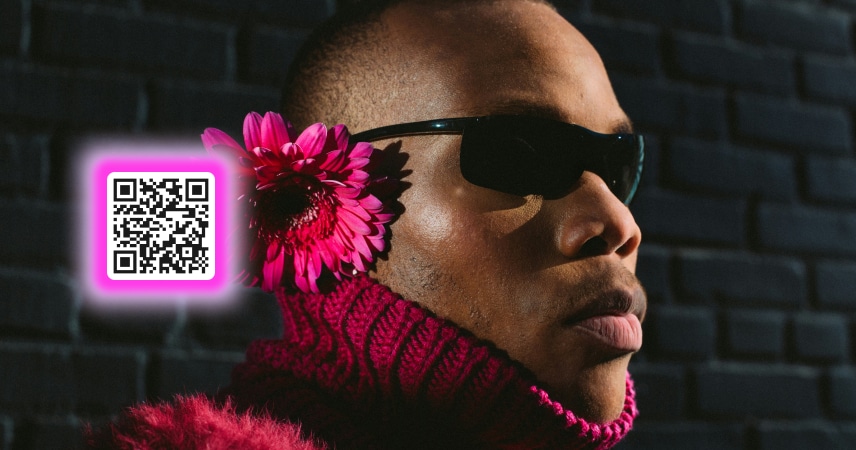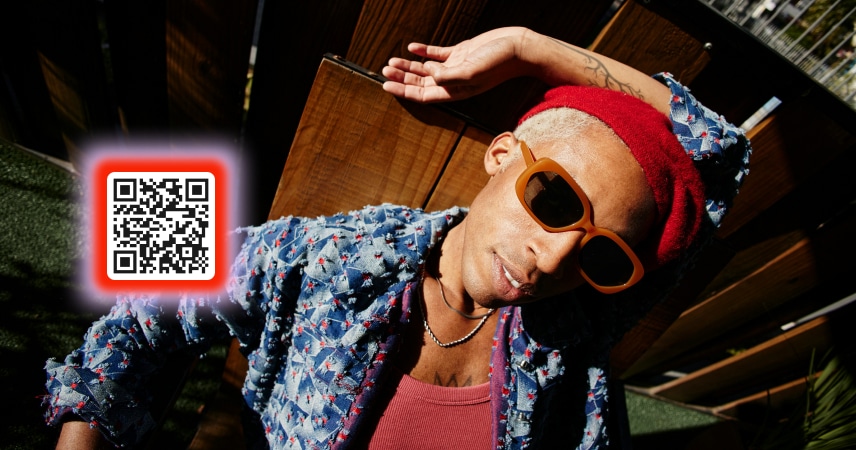
Academic theories are complex and tough to understand. Queer theory is no different. This article will try to explain it as simply as possible but hold on to your seatbelt because it won’t be easy.
To introduce this theory, it’s important to understand that the conversations about gender identity and sexual orientation have become a part of normal discourse in our society today. Decades ago, this was not the case. Society was fixated on what was considered “normal,” and that meant a world of heteronormative assumptions. People grew into adulthood and had “normal” binary partnerships or marriage.
And anyone who wanted to assume a position in society, politics, or any other institutions in society were a part of what was considered “normal.” In short, heteronormative behaviors brought achievement and success. They have been reinforced by every institution that we have today – government, business, religion, and more. And they still exist today and still determine who is “in” and who is “out.”
Queer theory challenges all of these institutional norms.
Enter Queer Theory
Part of understanding why we live in a white, Caucasian, “straight”-dominated society and what it means for everyone else is understanding how we got to this point and what are its implications for everyone else. In other words, how did we get to the point of who is “in” and who is “out.”
Once we understand how we got to this point, queer theory then looks at how to challenge these political and social norms in a successful way. (and, given the tenor in the US today and the re-emergence of anti-LGBTQ+ laws, this is especially relevant).
Historical Development of Queer Theory
Think for a moment about the theory of evolution. It was first proposed by Charles Darwin and codified in his work Origin of the Species. Was that the “be all and end all” of the theory? No. Scientists from then on studied his work, did their own research and investigations, and added to it. That is still going on today, as new discoveries continue to be made. Darwin provided the theoretical frameworks upon which others could build. The theory of evolution is a work in progress.
So it is with queer theory. It probably had its origins with a book by French philosopher and historian Michel Foucault, titled The History of Sexuality. In it, Foucault examines the formation of sexual identity and, more important, how these identities are described, named, and then managed. He then moves to a discussion of power and how it is not evenly distributed. Defining homosexuality was in the hands of the medical profession and the legal system, thus setting up power structures of how it was to be managed – until recently as a mental illness and the illegality of its practice. Hmmm…homosexuals had no say in their own identities.
This concept of who had the power, especially in the areas of political and social norms, festered. And it didn’t just fester within the LGBTQ community and their sexuality.
By the 1960s, that sense of having no power structures of their own began to show itself in plenty of activism. It was an era of protest and demands on the part of marginalized groups – blacks, women, and yes, queer people.
In the 1970s and 80s, that activism on the part of the queer community became more pronounced. The Stonewall rebellion had a lot to do with it. Lesbian, gay, and bisexual activism grew rapidly, as did more scholarly sexuality studies of their history and their culture. At the same time, some within the queer community began to form organizations, specifically to recognize the AIDS epidemic (ACT UP Coalition) and begin to address it and Queer Nation to bring recognition of the plight of queer people as they faced discrimination and violence.
The term “Queer theory” began to be used as a critical theory about the social and cultural phenomena of where queers found themselves in an overwhelmingly “straight” society. This critical theory had its foundation in discrimination against blacks and is a subject of lots of denigration in today’s political climate. In 1990, Teresa de Lauretis, a film theorist, attended a scholarly conference about lesbian and gay studies at the University of California, Santa Cruz, and first used the term “Queer Theory.” It was her contention that lesbian and gay studies should not be conducted as studies on people who were deviations from the norm but as people who have consciously rejected “cultural homogenization” and have their own non-hetero social and cultural modes of interacting – socially and sexually – that challenged all of the norms that resulted in their marginalization in the first place. The hetero world was “accepting” of such things as autonomy, the right to privacy, and even access to marriage and the military (of course, it was the time of “Don’t ask, don’t tell.”). Where that world draws the line, however, is when these “non-normatives” attempt to invade their social and power structures. That means they will not be able to manage just what all marginalized groups – racial and ethnic minorities, women, and queers – have a right to. It’s a type of cultural politics that the majority straight society feel they must control.
What were once dubbed lesbian and gay studies on university campuses were abandoned in favor of coursework in Queer theory in any number of academic disciplines – sociology, history, psychology, and political science. The key concepts are that all identities are “sociocultural constructs” that change. Depending on the “times,” there are different meanings and values that influence how people identify. And these meanings are portrayed in political and social institutions such as family, schooling, legislation, court decisions, and all of media – TV, film, news outlets, websites, broadcasting, and more.
Here’s a simple example: When television was new, there were some very strict regulations about what could be shown. Married couples had to sleep in twin beds; pregnant women could not be shown; nuclear families reflected a wife and mother in the kitchen in a dress, heels, and pearls and a husband and father who went to work and supported the 2.4 kids they raised. Film depicted the cultural norms with the typical “boy meets girl; boy and girl fall in love; boy and girl get married and live “happily ever after.” As societal norms changed, so did the media portrayal of them. Today, couples share a bed and have their romps in said bed; scantily clad females advertise products and services; Netflix series portray a very different side of relationships. And queers? Well, they are fine in such fields as entertainment, but don’t let them invade my child’s life by reading stories to them in libraries.
In truth, it’s all about power and who holds it. And that power shapes a national identity of what is normal and how populations can be managed, particularly the marginalized who have not power.
Queer Theories of Gender
Queer theory critiques society’s definitions of gender. Multiple scholars are clear on the position that being feminine is not a condition reserved for just women; and masculinity is not just reserved for men. Thus, we have “butch” lesbians and feminine gay men. And we have transgender women with male genitals and transgender men with female genitals.
Separating Gender From Genitals
And here’s another one of the key concepts of queer theory. We have to separate queer identities from queer genitals. There is no “natural” gender and sexuality, something that has been used by those who manage such concepts as unnatural and, of course, inferior to traditional heterosexuality. Genitals are “nature;” sexual identities are “nurture.” And yet, this has also been challenged by others who state, for example, that transgender people are trans at birth, and their sexual identities have nothing to do with “nurture.” It’s about behavior.
Gender Performativity
Gender Performativity relates to sexual practices. In 1972, Esther Newton, anthropologist, published a work titled Mother Camp: Female Impersonators in America. She insisted that the link between the genitalia and sexual practices is not natural for gay people. Of course, they have always known this and have chosen sexual practice that is “appropriate” for them, not what is considered natural by straight society.
Later, in 1990, philosopher, author, and professor, Judith Butler published a book: Gender Trouble. While it was largely a work about feminist theory and the stupidity of putting females into a homogeneous group, considering their sexual practice differences, she first used the term performativity. Anyone’s sexual identity is the result of persistent sexual behavior. Thus, performativity in the lesbian community is female-to-female sex. From a queer perspective of feminist theory and beyond, this is exactly correct.
The discussion continues among scholars and creeps into sociological theory, literary theory, philosophy, anthropology, psychology, and more. There is hardly a non-STEM academic discipline it doesn’t touch. But the discussion within queer theory all points to one conclusion that all queer theorists agree upon. The concept that one’s genitals should always determine their sexual behavior is what heteronormative assumptions are made of and is used to marginalize queer people.
Gay and lesbian studies, gender and sexuality studies, research and study on human sexuality and sexual orientation will continue because contemporary queer theory is still a work in progress. Does queer theory ever reach its pinnacle? No. Gender and sexuality studies, queer theorists, and competing queer theories are what critical inquiry and the pursuit of scientific knowledge is all about. Queer scholarship will continue. And queer theory will continue to evolve. That is important.
But more important is the well-being of those living a queer life on a queer planet with widely varying degrees of acceptance, hostility, discrimination, criminality, and violence. This is where the “rubber meets the road.”
Living a Queer Life in the 21st Century
Of course, it depends on where you live. But let’s look at the US that boasts a national identity of tolerance and acceptance. After all, gays can now openly serve in the military once “Don’t Ask Don’t Tell” was repealed in 2011. And gay can now marry and enjoy all of the legal rights that a marriage provides (2015 Supreme Court decision). But, of course, the devil is in the details and the form that cultural contexts take. And that cultural form is not so kind to all gender roles. Queer theory points this out.
HRC
This organization focuses on rights and legal protections for the queer community. And it worked toward repeal of don’t ask don’t tell and the legality of gay marriage. Kudos to them for that.
But let’s dig a bit deeper. Because the HRC seems to focus on what has come to be known as homonormativity – that is the assimilation of queer folk into existing institutions. And the biggest beneficiaries? White, middle-class gay men who have been assimilated quite well and who enjoy the greatest rights and privileges that societal acceptance affords. They can marry, have children, are protected by equal employment laws, etc. And if one partner has health insurance, they both do. This is not to say that the lesbian community has not benefited as well, but again, they are generally white and middle-class and often feel they have to hide their sexuality in some places, especially the workplace. This is part of the feminist theory that folds into queer theory. Non-white lesbians don’t fare so well.
What about the rest of the LGBTQ community? What about those of color, those who live in poverty, those who are not protected by existing non-discrimination laws (e.g., transgenders are not included in the 2007 Employment Non-Discrimination Act)?
The term homonormativity was coined by Dr. Lisa Duggan, professor of social and cultural analysis at New York University, journalist, and activist. She uses this term to describe the work of organizations like the HRC who focus on assimilation of queer people into regular social norms rather than forge their own cultural contexts and work to have hetero society accept them and provide equality in that context. Because there is still job and housing discrimination, harassment and violence, and other things that others enjoy in their everyday lives. Many state that groups like HRC are not serving the most vulnerable members of the queer community.
Another interesting point. Queer politics are even coming to play in US relationships with other parts of the world. For example, US politicians point to their “progressive” policies toward queers and use that as a means of criticizing the anti-queer stances of other countries, specifically Muslims and certain African nations.
Duggan and other collegial queer theorists believe that attempting to force assimilation of the marginalized into current heteronormative institutions will be damaging and should not be considered.
Political Imagining and Transformative Politics
A body of queer theorists, especially those of color, are beginning to develop queer theory that imagines a queer world sitting aside from the heteronormative world and yet enjoying full equality. Today, in the US, that equality is under attack in at least 41 states that have passed or are considering passage of a number of anti-LGBTQ legislation. HRC condemns these, of course, but it is the ACLU that is doing that hard ground work.
And so, there is much work to do to get to the ideal climate for all marginalized queer people.
What does this ideal world look like? There are queer theorists, with queer theories of this ideal world, and most of them are minorities – especially black and Latino.
Queer Politics, Transformative Politics
One non-white of the many queer theorists was Jose Esteban Munoz, who envisioned a queer America that sits alongside the heterosexual world, in full equality, side by side, but a queer identity that is fully separate from heteronormative – a queer nation, so to speak, but living in harmony with the “other” world. His definitive work on the matter is In Cruising Utopia: The Then and There of Queer Futurity. He saw a merging of critical theory – critical race theory and critical queer theory.
Enter Charlene A Carruthers. and her book, Unapologetic: A Black, Queer, and Feminist Mandate for Radical Movements. She provides a black female perspective and framework on queer theory, stating that vulnerable and marginalized queer people must work together to dismantle all societal oppression. And in her book, she addresses queer theory and the myth that queer people, especially women, can be assimilated into and become a part of the “universality” that is publicly touted. Truly equal justice, in her eyes, is the start point.
Obviously, queer theory is filled with queer theorists who approach queer theory from many different perspectives, ideas, and visions.
Important Resources
For those of you who are intrigued by queer theory, there are some great resources. Consider the following:
1. The History of Sexuality by Michel Foucault
This work was an initial treatise that actually served as the catalyst for academics to launch into and begin to develop queer theory. It’s a 4-voume work, and a bit difficult to chew on and consume, but worth it to get a good perspective on the impetus for queer theory.
2. Gender Trouble by Judith Butler
This is another work that will take time to chew on and digest. But Butler built upon the premises of Foucault but focusing on the feminist perspective. Her major contribution to queer theory is the concept of performativity. Gender and sexuality, according to Butler, are fully based in consistent sexual behaviors over time.
3. Epistemology of the Closet by Eve Kosofsky Sedgwick
Interestingly, Sedgwick has contributed to Queer theory through literary studies of the works of Nietzsche, Oscar Wilde, Proust, and even Herman Mehlville. Her contributions relate to the constructivist approach to the male homosexual, and the gay and heterosexual binary norms of the 2oth century.
4. Queer Theory: An Introduction by Annamarie Jagose
This is probably the easiest read of all of these resources. It’s a simple introduction for the novice and will be a good way for anyone to begin a study of queer theory.
5. Disidentifications by Jose Esteban Munoz
Here is a definitive work that speaks to the how marginalized queer artists of color manipulate their environment and their identities – both as queer and as people of color. His other definitive work, In Cruising Utopia: The Then and There of Queer Futurity is referenced earlier in this article and posits an ideal world in which queer people exist in separate but equal environments, as opposed to queers being assimilated into the hetero culture. That, he says, is not an option, because hetero society only accepts certain types of queers.
Where are We Now? Let’s Summarize
Contemporary queer theory is a work in progress. And queer theory has come to mean many different things, as people add their traditional assumptions and opinions and others add new ones.
All sorts of things have contributed to queer theory – gender identity, sexual identity, queer studies in academic coursework, gay and lesbian studies which came before queer theory and deeper discussions of gender identities. Human sexuality is complicated, but the historical context is important.
The central importance of queer theory is really about power. Who has the power in a society and what do they need to do to keep that power from other groups who may be a threat?
In the US, that power has rested in the hands of Anglo-Saxon whites from the founding of the country forward. One key concept of queer theory is that these power brokers will only allow other groups enough rights and powers that will maintain the social construct they have established. Primary example? Freed slaves were subjected to Jim Crow laws that ensured they did not have equality and could not “mingle” with the white world.
And social construction continues today for gay and lesbian, bisexual, trans and others for whom the word queer is used to describe themselves. Certain individuals within this community are “allowed” to “mingle,” especially white middle class boys and men as long as they restricted their performative acts are kept private. And, to some degree white middle-class lesbian women and bisexuals enjoy the same inclusion so long as their sexuality is not on public display in the white heteronormative world.
For trans individuals, gender performance is just too aberrant a behavior for any type of acceptance. They will never be assimilated into the current power structure, though a number of LGBTQ support organizations believe this is the ideal.
So, the big discussion right now about queer theory and plenty of media studies is this whole issue of dual and opposing goals for the queer community. One side insists that equality means a continued push for assimilation, while others, such as Jose Munoz, in his influential essay about disidentifications and his book, referenced above, insists that assimilation is not possible. Full equality for all who fall under the word queer is a separate but equal existence, supported by our legal system from the lowest to the highest level.
So, What is Queer Theory?
The best that can be said right now is that queer theory is a work in progress. If you have made it through this article, you have a good idea of the amazing diversity of academics who are addressing queer theory and making contributions to it in virtually every academic discipline. And that is exactly how it should be. No theory remains stagnant. As new research, thought, and perspectives are added, every theory is a living, breathing entity. Long live queer theory.





